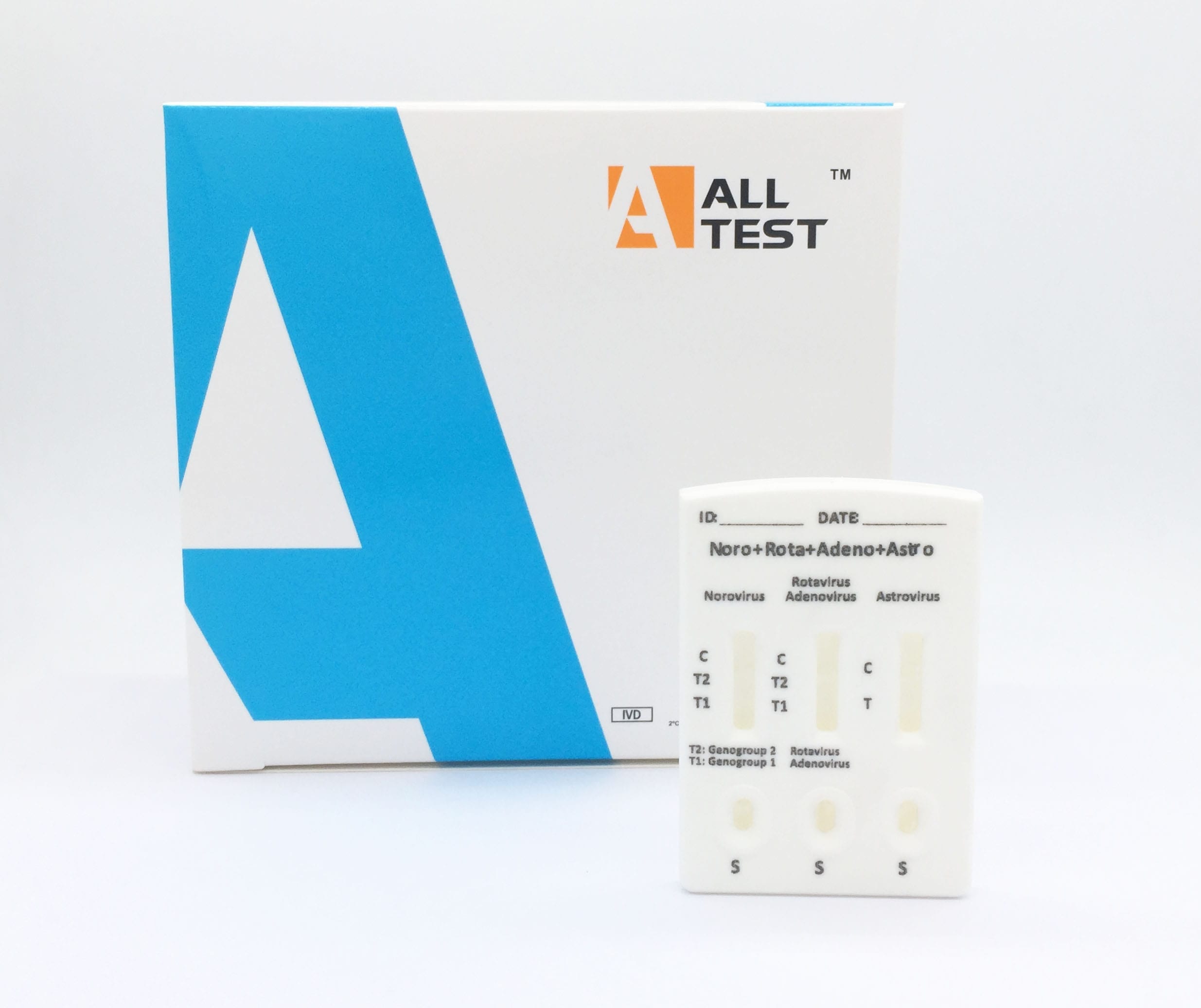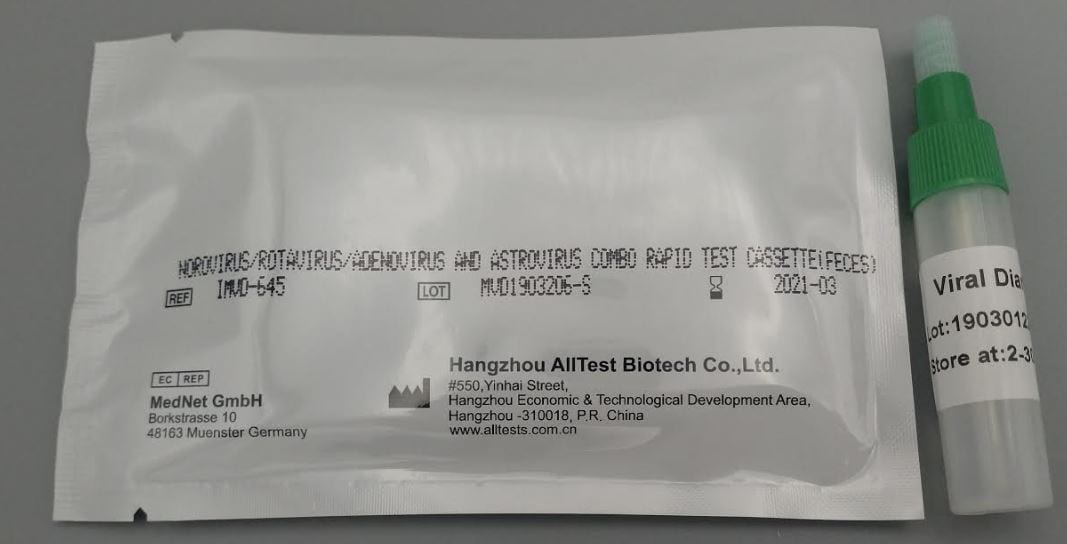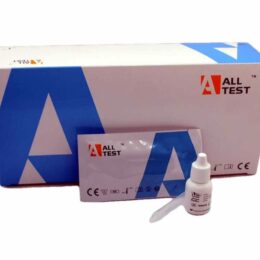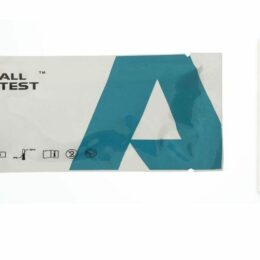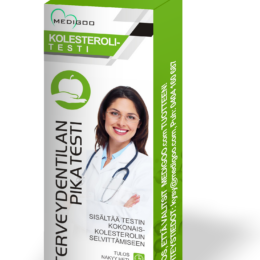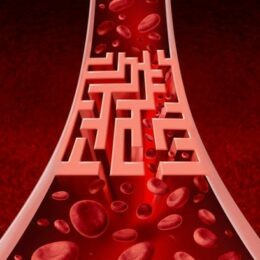Multivirus test for abdominal disease
21,90 €
An easy-to-use quick test for the detection of the most common viruses that cause stomach disease in the stool.
The test will determine whether the stomach symptoms are caused by noro, rota, adeno or astroviruses.
- CE marked for professional use
- The result is easy to read and interpret and will be completed in 15 minutes.
- Accuracy 97%
Availability: In stock
Stomach disease is most commonly caused by viral infectious gastroenteritis, symptoms of which include abdominal pain, loose stomach, vomiting, headache and periodically fever. This multivirus test will show whether the cause of stomach disease is caused by norovirus, rotavirus, adenovirus or astrovirus
Norovirus, Rotavirus, Adenovirus and Astrovirus info
Norovirus
Norovirusesare the most common causes of gastroenteritis all over the world and are characterised by explosive, occupational or site-specific disease epidemics. Norovirus is highly transmitted through food, drink and human contact. The infection is usually faecal, but also spread through vomiting vapours. The incubation period of the acute disease is 24-48 hours, but it can erupt even after 12 hours. The disease is usually mild, but if left untreated, death in young children and in the elderly in poor condition. Typical symptoms of norovirus disease are nausea, vomiting, diarrhea and abdominal cramping. For some, the disease also causes mild fever, chills, headaches, muscles, and general fatigue. Most people limit the disease itself and the symptoms go away in a couple of days.
Rotavirus
Acute diarrhea is a common cause of death among children in poor countries and a serious pediatric disease worldwide. The most common cause of the disease is contraindicated in 1973, invented rotavirus, which is transmitted through food contaminated by faeces or as a result of poor hygiene, can, for example, be contaminated with feces from the hands of the mouth, and causes diarrhea with a 1-3 day delay. For the detection of the virus in the stool, the best time is 2-5 days after the onset of the disease, but the virus is excreted in the faeces throughout the long period of diarrhea. Rotavirus-induced stomach disease is life-threatening, especially for infants, the elderly and people with weak immune response. Infections are most common in winter conditions and can cause epidemics in which thousands of people get sick. Typically, rotavirus is found in about 50% of children admitted to hospital with stomach disease. Viruses multiply in cell nuclei and appear to be species-specific, causing different effects on different species. Rotavirus cultivation is very difficult, so it is not worth isolating it for diagnosis. Its direct detection of stool is easy and possible with many different techniques.
Adenovirus and Astrovirus
In the majority of children with diarrhea who are not the cause of the disease rotavirus, the cause of the disease is adenovirus,types Ad40 and Ad41. Adenovirus causes stomach disease all over the world in all seasons. The victims are children under the age of 2, but the disease strikes all ages. 4-15% of the abdominal diseases requiring hospitalisation are caused by adenovirus. Astrovirus,which causes the same picture of the adenovirus, is also a cause for severe diarrhea in small children around the world.
The test will be accompanied by detailed instructions on how to perform the test.
Reading the test result
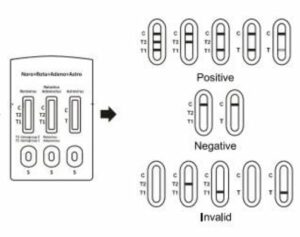
The result is read 15 minutes after the sample is instillated into the S-wells (no longer after more than 20 minutes), in which case the background should be uniformly light and the C line clear
To interpret the result, proceed as follows:
- In the absence of a C-line, the test has failed and must not be interpreted in any way.
- The C-line alone (i.e. the absence of the T-line) means that the sample is negative and there are no viruses to be examined in the sample
- Two lines (C and T) indicate that the sample is post and the sample contains the virus to be
Norovirus window
- T1 line = main group type 1 detected
- T2 line = parent group type 2 detected
Rota/adenovirus window
- T1 line = adenovirus detected
- T2 line = rotavirus detected
Astroviruswindow
T-line = astrovirus detected
This product is CE marked and tested by healthcare professionals. The test is equipped with a Finnish user manual. It is important to follow the instructions and interpret them correctly. Tests have not been studied in home use.
Importer: Abcell Oy
Read our article: Water epidemic viruses remain in drinking water for several years
| Weight | 0,02 kg |
|---|---|
| Dimensions | 15 × 5 × 1 cm |
| Product quantity | 1 pcs, 3 pcs, 5 pcs, 10 pcs |

